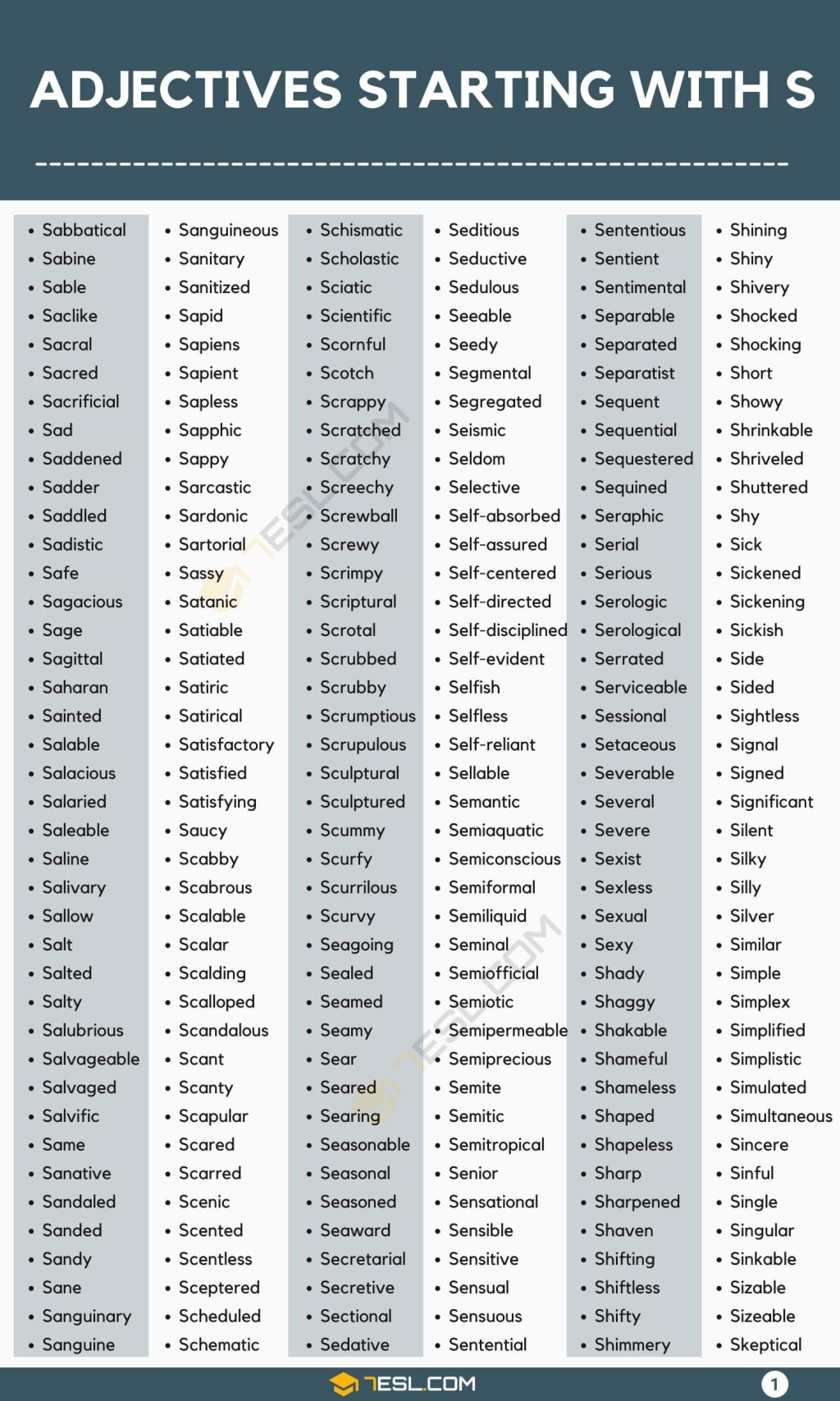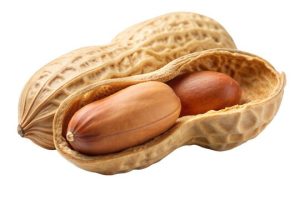Enhance Your Writing: Master ‘S Adjectives For Impact

“S adjectives are essential for vivid communication. These descriptive words add depth and color to our language. Want to master the art of adjectives that start with ‘s’? Look no further. Explore a world of striking descriptors that will elevate your writing to new heights. Let’s dive in and discover the power of ‘s adjectives’ together!”
The Power of Adjectives: Exploring the World of Descriptive Words
Welcome, young learners, to a fascinating journey into the world of adjectives! In this blog post, we will delve into the wonderful realm of descriptive words that bring color, life, and depth to our language. From ‘sparkling’ to ‘magnificent’, adjectives help us paint vivid pictures with our words. Let’s embark on this adventure together as we uncover the magic of adjectives!
What Are Adjectives?
Before we dive deeper into the world of adjectives, let’s first understand what adjectives are. Adjectives are words that describe or modify nouns and pronouns. They give us more information about a person, place, thing, or idea. For example, in the sentence “The fluffy kitten napped in the warm sunlight,” both ‘fluffy’ and ‘warm’ are adjectives that provide details about the kitten and the sunlight. Adjectives make our sentences more interesting and engaging!
Types of Adjectives
Adjectives come in different forms, each serving a unique purpose. Let’s explore some of the common types of adjectives:
1. Descriptive Adjectives
Descriptive adjectives paint a vivid picture by providing specific details about a noun. They help us imagine how something looks, feels, sounds, smells, or tastes. For example, ‘sparkling’ describes a clean diamond, and ‘spicy’ characterizes a flavorful dish. Descriptive adjectives make our writing more colorful and expressive!
2. Comparative and Superlative Adjectives
Comparative and superlative adjectives are used to compare different things or to show the highest degree of a quality. Comparative adjectives are used when comparing two things, while superlative adjectives are used when comparing three or more things. For instance, ‘faster’ is a comparative adjective (e.g., “The cheetah is faster than the lion”), and ‘fastest’ is its superlative form (e.g., “The cheetah is the fastest animal”).
3. Possessive Adjectives
Possessive adjectives demonstrate ownership or relationships. They indicate that something belongs to someone or something else. Common possessive adjectives include ‘my,’ ‘your,’ ‘his,’ ‘her,’ ‘its,’ ‘our,’ and ‘their.’ For example, in the sentence “Her toy is on the table,” ‘her’ is a possessive adjective that shows possession.
How Adjectives Make Writing Exciting
Imagine a world without adjectives. Our sentences would be dull and lacking in detail. Adjectives add flavor to our language, making stories come alive and engaging our readers’ senses. Let’s see how adjectives can transform a simple sentence:
Original sentence: The dog ran.
Sentence with adjectives: The fluffy brown dog ran happily in the park.
By adding descriptive adjectives like ‘fluffy,’ ‘brown,’ and ‘happily,’ we now have a clearer image of the dog and its actions. This is the magic of adjectives—they enhance our writing and create a more vibrant reading experience!
Fun Ways to Learn Adjectives
Learning adjectives can be an enjoyable experience! Here are some creative and fun ways to practice using adjectives in your writing:
1. Adjective Hunt
Go on an adjective hunt around your house or neighborhood. Look for objects and describe them using colorful adjectives. For example, you could describe a tree as ‘tall’ or ‘leafy.’
2. Adjective Story Chain
Play a game where each person adds an adjective to create a collaborative story. Start with a simple sentence like “The cat walked,” and take turns adding descriptive adjectives to build an exciting tale.
3. Adjective Bingo
Create an ‘Adjective Bingo’ card with various adjectives. As you read a book or listen to a story, mark off the adjectives you hear. See who can get Bingo first!
Congratulations, young adventurers! You have now unlocked the magical world of adjectives. These descriptive words have the power to transform ordinary sentences into extraordinary ones. By mastering adjectives, you can make your writing more vivid, engaging, and enjoyable. So go forth and sprinkle your stories with lively adjectives, and watch as your words come to life!
Thank you for joining us on this exciting journey into the realm of adjectives. Stay curious, keep exploring, and never underestimate the power of descriptive words!
Basic vs 🔥EXTREME🔥 Adjectives!
Frequently Asked Questions
What are adjectives and how do they enhance writing?
Adjectives are words used to describe or modify nouns or pronouns, providing more details about them. They add depth to writing by giving readers a clearer picture of the noun being described. For example, instead of saying “dog,” you can say “fluffy dog,” which paints a more vivid image in the reader’s mind.
How can adjectives improve the quality of a sentence?
By using adjectives, writers can make their sentences more engaging and descriptive. When adjectives are added to nouns, they make the writing more interesting and help convey the writer’s intended message more effectively. For instance, saying “delicious pizza” is more appealing than just stating “pizza.”
Can adjectives change the meaning of a sentence?
Yes, adjectives can significantly impact the meaning of a sentence. By choosing the right adjectives, writers can alter the tone, mood, or perception of the noun they are describing. For example, describing a character as “mysterious” versus “friendly” can completely change how the reader imagines them.
How do you know which adjectives to use in a sentence?
Selecting the appropriate adjectives depends on the context and the message you want to convey. Consider the characteristics, qualities, or emotions you want to highlight about the noun. Adjectives should be chosen carefully to create a specific image or evoke a particular feeling in the reader.
Are there any rules to follow when using multiple adjectives in a sentence?
When using multiple adjectives in a sentence, it’s important to follow a specific order: opinion, size, age, shape, color, origin, material, and purpose. This order helps maintain clarity and ensures that the adjectives flow smoothly within the sentence. However, there can be exceptions based on style or emphasis.
Final Thoughts
In conclusion, a strong command of ‘s adjectives can greatly enhance writing. Vivid, descriptive words bring life to sentences, captivating readers’ attention. Utilizing a variety of adjectives allows for more engaging and colorful storytelling. Crafting sentences with carefully chosen adjectives can make a significant impact on the overall quality of your writing. Mastering the art of selecting ‘s adjectives will undoubtedly elevate your writing to new heights.





